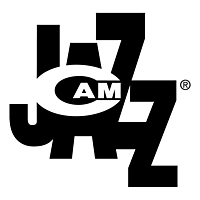Home » Jazz Articles » Cecil Taylor
Jazz Articles about Cecil Taylor
In the Brewing Luminous: The Life & Music of Cecil Taylor

by Ian Patterson
In the Brewing Luminous: The Life & Music of Cecil TaylorPhilip Freeman 344 Pages ISBN: # ISBN 978-3-9553-261-9 Wolke Verlag 2024 “The thing that makes jazz so interesting is that each man is his own academy," Cecil Taylor once said, (quoted by Val Wilmer in Jazz People, Da Capo, 1970). The pianist/composer was certainly a school of one, a pianist and composer who occupied a unique position in contemporary music for almost seventy ...
Continue ReadingCecil Taylor: Live At Fat Tuesday's February 9, 1980 First Visit

by Giuseppe Segala
Nel periodo di passaggio tra gli anni Settanta e Ottanta, Cecil Taylor è stato oggetto di numerose attenzioni da parte di etichette europee, che ne hanno lodevolmente documentato esibizioni dal vivo assai significative. Tra queste, alcune presentano la formazione Unit in differenti organici strumentali, che esprimono con dovizia un momento di impeto formidabile e di incredibile intesa creativa. Ne sono esempio le registrazioni in Germania del giugno 1978 Live in the Black Forest e One Too Many Salty Swift and ...
Continue ReadingIn the Brewing Luminous: The Life & Music of Cecil Taylor

by Jack Kenny
In the Brewing Luminous: The Life & Music of Cecil TaylorPhilip Freeman 344 Pages ISBN: # ISBN 978-3-9553-261-9 Wolke Verlag 2024 The sign over the nightclub says it all: Cecil Taylor starts where Thelonious Monk leaves off. Jazz has never really come to terms with Cecil Taylor. Comparisons with Bartok, Messiaen, Stravinsky, Berg are misleading. Does Taylor have a direct line to earlier pianists in the jazz tradition? To earlier composers? Is he ...
Continue ReadingCecil Taylor: Live At Fat Tuesday's February 9, 1980 First Visit

by John Eyles
For some years, Werner X. Uehlinger's Ezz-thetics label has been bringing smiles to the faces of countless lovers of free jazz by re-releasing albums featuring such luminaries as Albert Ayler, John Coltrane, Bill Evans, Jimmy Giuffre, Sun Ra, Cecil Taylor (to name but a few of many) all with state-of-the-art sound quality. The label's distinctive orange lettering over black and white period images of the featured artists has made its albums instantly recognisable. Until now. The current album has blue ...
Continue ReadingCecil Taylor Unit: Live At Fat Tuesday's February 9,1980 First Visit

by Chris May
More faux-intellectual codswallop has been written about Cecil Taylor than about any other jazz musician, dead or alive. He has been, and continues to be, misrepresented as an arcane Einsteinian theorist by a cult whose members are afraid of visceral reactions to his art (or to anyone else's). But Taylor's work demands a visceral response. It has nothing to do with rational thought and everything to do with emotion and physicality. Sadly, the nonsense that has been written about his ...
Continue ReadingAlbert Ayler: More Lost Performances Revisited

by Chris May
A state-of-the-art sonic restoration of obscure but historically important Albert Ayler material by Switzerland's ezz-thetics label, which with its parent label, Hat Hut, has been creating an audiophile archive of Ayler recordings with the support of his estate since 1978. All too often, “more" in an album title means “Beware: barrel scraping in progress." Not in this case. More Lost Performances Revisited is primetime Ayler. The disc draws from three sources over a five-year timespan. The earliest ...
Continue ReadingCecil Taylor, Ellington Seattle Concert, Aretha Franklin

by David Brown
This week on the Jazz Continuum, we celebrate the birthday of Aretha Franklin with her music and Franklin covers by Philly organist Jimmy McGriff. We'll continue with a musical tribute to Cecil Taylor, one of the most uncompromisingly gifted pianists in jazz history who was born on this day in 1929. We'll be spinning from Taylor's discography, both early works and key, influential recordings. Then, we'll visit the Duke Ellington orchestra performing in Seattle, on this day in 1952, when ...
Continue Reading



















